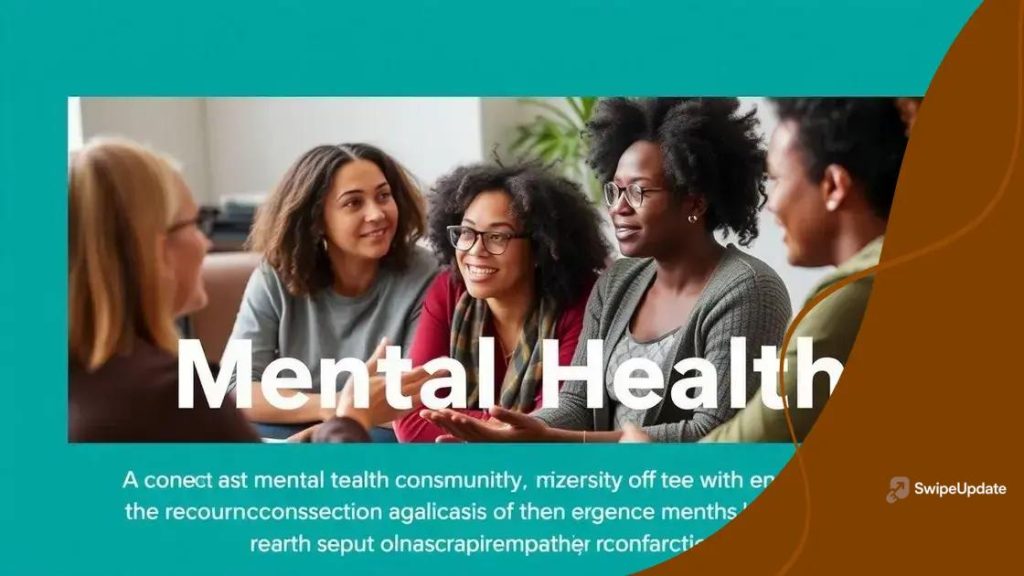Mental health parity laws: Are they enough for equity?

Mental health parity laws ensure that insurance coverage for mental health care is equal to that for physical health care, improving access and promoting equity in mental health services.
Mental health parity laws play a crucial role in ensuring that mental health care is treated equally to physical health care. But do they go far enough to guarantee fair access for all? Let’s dive into the details and explore their significance.
Understanding mental health parity laws
Understanding mental health parity laws is essential for recognizing how these regulations enhance access to mental health care. At their core, these laws aim to ensure that insurance coverage for mental health is equal to that for physical health. This shift is vital for breaking the stigma surrounding mental health issues.
The laws are designed to address disparities and promote fair treatment. However, many people are unaware of how these laws function or their real-world implications.
Key Components of Mental Health Parity Laws
These laws include several significant components:
- Equal coverage for mental health services.
- Limits on out-of-pocket expenses for mental health care.
- Increased access to a wider range of treatments.
- Requirements for insurance providers to comply with parity standards.
By enforcing these components, mental health parity laws help individuals receive necessary care without facing unreasonable barriers. However, understanding the laws requires looking beyond the legal language.
How Parity Affects Patients
Mental health parity laws have far-reaching effects on patients. For instance, these laws can lead to more affordable treatment options, enabling individuals to seek help without overwhelming financial burdens. Moreover, treatment plans may be more comprehensive and tailored to individual needs.
Despite their benefits, there are still challenges to implementation. Awareness campaigns can help educate both patients and providers about their rights under these laws.
Ultimately, a better understanding of mental health parity laws empowers patients to advocate for their care and navigate the healthcare system more effectively.
The impact of parity on healthcare access
The impact of parity on healthcare access is significant, as these laws reshape how individuals seek mental health services. By ensuring insurance coverage is equal for mental and physical health, parity laws create a fairer system for all patients. This is essential in promoting better health outcomes.
With the implementation of mental health parity laws, individuals can access necessary treatments without facing excessive costs. This shift encourages more people to get help when they need it, ultimately reducing stigma associated with mental health issues.
Increased Accessibility
One notable benefit of parity is the enhanced accessibility of mental health care:
- Lower out-of-pocket costs for patients.
- More mental health professionals available to provide care.
- Greater variety of treatment options, including therapy and medication.
- Fewer restrictions on the number of visits covered by insurance.
This increased access helps individuals to seek help sooner, which can lead to more effective outcomes.
Barriers Still Exist
While parity has improved accessibility, there are still barriers that some individuals face. For instance, some insurance providers may not fully comply with the laws, which can lead to confusion for patients. Even with parity, not all providers accept all insurance plans.
It’s crucial for patients to understand their rights under these laws. Being informed can empower individuals to advocate for themselves when facing access challenges. For many, the knowledge of parity encourages them to pursue the mental health care they deserve.
Challenges in enforcing mental health parity

Challenges in enforcing mental health parity can significantly impact individuals seeking care. Even with established laws, gaps in enforcement remain. Many people still face obstacles in accessing mental health services due to these challenges.
One key issue is the inconsistency in how insurance providers implement the laws. Some insurers may apply stricter rules for mental health coverage compared to physical health, thus undermining the intent of parity laws.
Common Obstacles
Several common obstacles hinder the enforcement of mental health parity:
- Lack of awareness among patients about their rights.
- Insurance companies not fully adhering to parity regulations.
- Inadequate mental health professionals available in certain areas.
- Complexity of insurance policies that confuse consumers.
These factors make it challenging for individuals to receive the care they need. Understanding these obstacles is the first step toward overcoming them.
The Role of Advocacy
Advocacy plays a vital role in addressing these challenges. Organizations focused on mental health can help educate both consumers and providers on the importance of parity. By raising awareness about rights and resources, advocates can empower individuals to demand better access to care.
Additionally, systematic changes are necessary to ensure compliance among insurance providers. Policy reforms may aid in closing the gaps in enforcement. Such reforms can strengthen the framework that supports mental health parity.
Examples of successful parity implementation
Examples of successful parity implementation showcase how well-enforced mental health parity laws can positively impact individuals and communities. By analyzing these examples, we can learn what works and how to expand access to mental health care.
Several organizations and states have made significant strides in implementing these parity laws effectively. Their efforts highlight the importance of adherence and the potential benefits of robust mental health coverage.
Notable Success Stories
Some notable examples include:
- The state of California, which has increased access to mental health services through comprehensive parity laws.
- A large employer that revamped its insurance plan to ensure equal coverage for mental and physical health, benefiting thousands of employees.
- Community health programs that focus on integrated care, providing both mental health and physical health services under one roof.
- Initiatives launched by non-profits advocating for mental health awareness and informing patients about their rights under parity laws.
These success stories demonstrate the power of effective implementation and advocacy. When mental health parity is put into practice, it leads to healthier communities by encouraging timely access to care.
Key Factors for Success
Several key factors contribute to the success of parity implementation. Legislative support and committed leaders play a crucial role in ensuring compliance. Coordination among various healthcare providers also enhances service delivery.
Additionally, public awareness campaigns help educate patients about their rights. As a result, more individuals are likely to seek help and navigate the healthcare system effectively. Ultimately, these examples reinforce the idea that mental health parity can lead to a more equitable healthcare landscape.
Future outlook for mental health equity
The future outlook for mental health equity appears promising as awareness of mental health issues continues to grow. With ongoing advocacy and reforms, there is a strong push toward making mental health care accessible and equitable for everyone.
Recent trends indicate that more organizations are prioritizing mental health initiatives. This focus is essential for integrating mental health into overall health plans. As public understanding of mental health improves, so does the demand for equitable treatment options.
Emerging Trends
Several important trends are shaping the future of mental health equity:
- Increased funding for mental health programs at local and national levels.
- Telehealth services expanding access to care, especially in underserved areas.
- Stricter enforcement of parity laws, ensuring fair treatment across the board.
- Innovative approaches to therapy, including digital therapies and community-focused care.
These trends provide hope that barriers to mental health care will continue to diminish. It’s crucial for stakeholders to keep pushing for policies that promote equity.
Challenges Ahead
Despite progress, challenges remain in achieving mental health equity. Stigma surrounding mental health persists, which can deter individuals from seeking care. Also, disparities in resources mean that some communities may lag behind in access to services.
Advocacy and education will be key in overcoming these obstacles. As more people recognize their rights to mental health care, the push for equity may intensify, leading to systemic changes. Collaboration among healthcare providers, policymakers, and communities will be vital to crafting a future where mental health equity is a reality for all.
FAQ – Frequently Asked Questions About Mental Health Parity Laws
What are mental health parity laws?
Mental health parity laws ensure that mental health care is treated equally to physical health care in insurance coverage.
How do these laws improve access to mental health care?
They help reduce financial barriers, making it easier for individuals to seek the mental health services they need.
What challenges exist in enforcing mental health parity?
Challenges include inconsistencies in insurance company compliance and a lack of awareness among patients about their rights.
What is the future outlook for mental health equity?
The future is promising as advocacy grows, more individuals learn their rights, and successful implementations serve as models for others.
